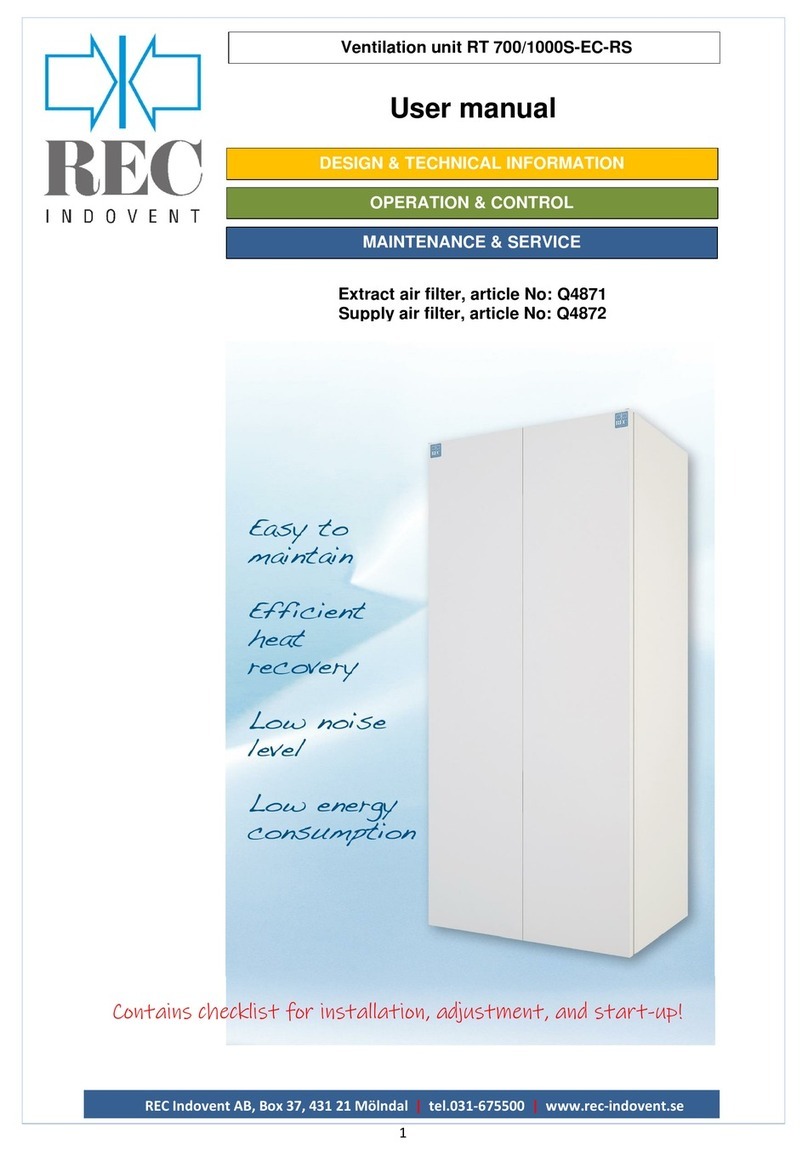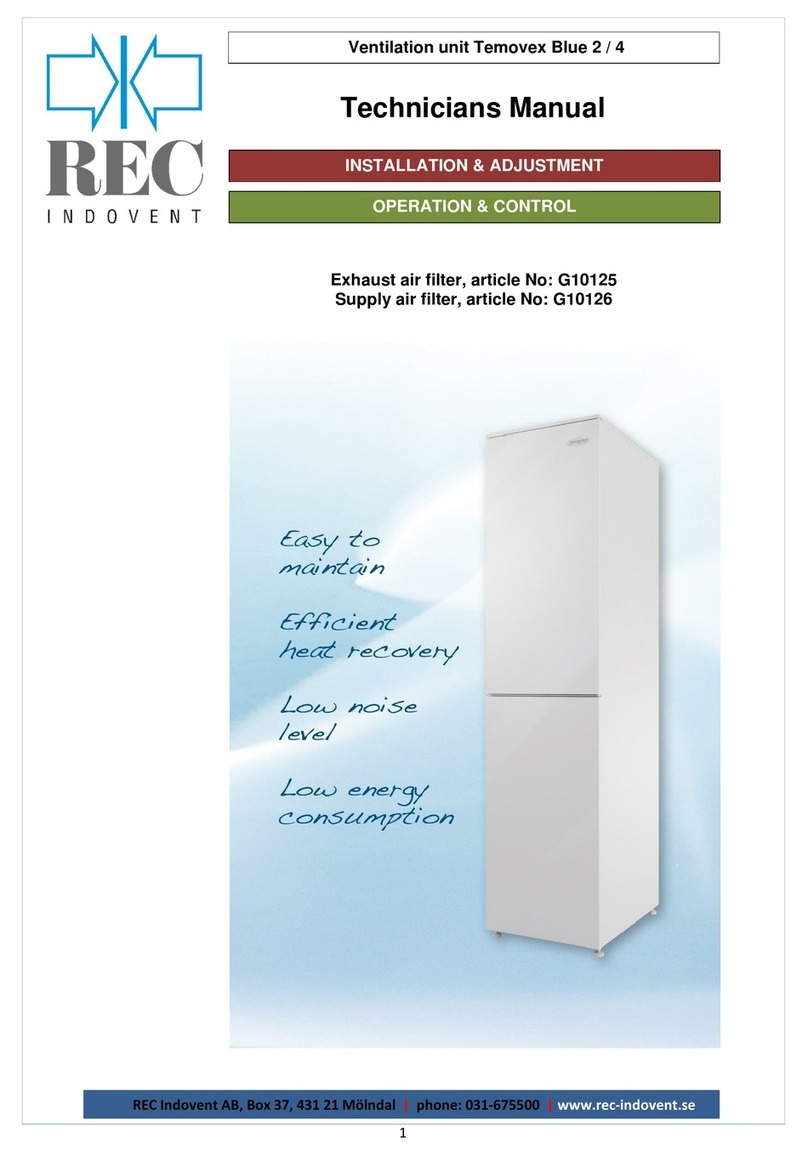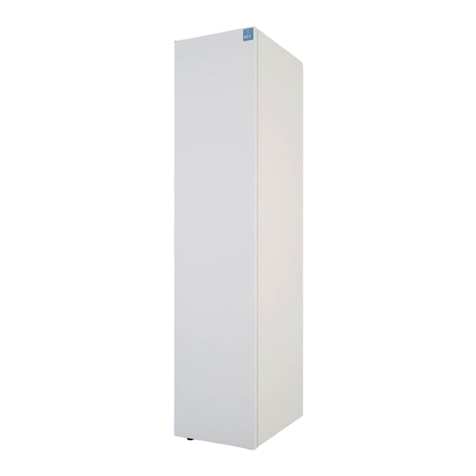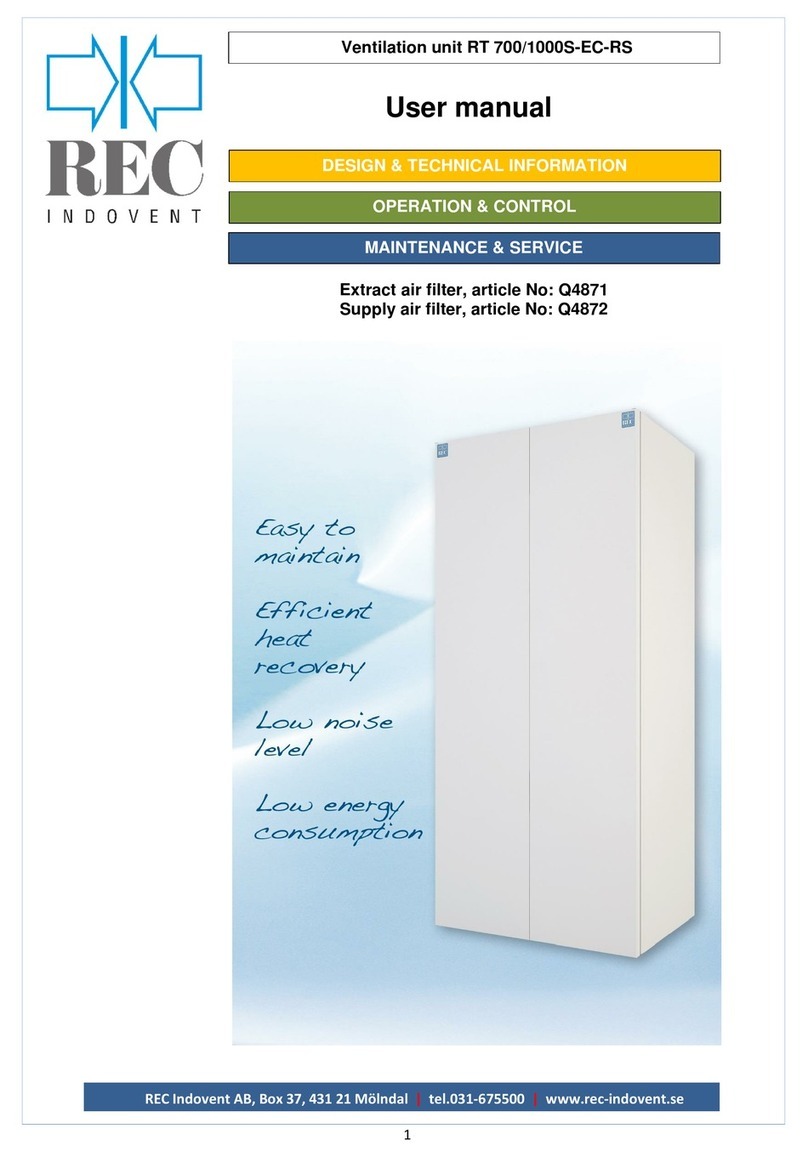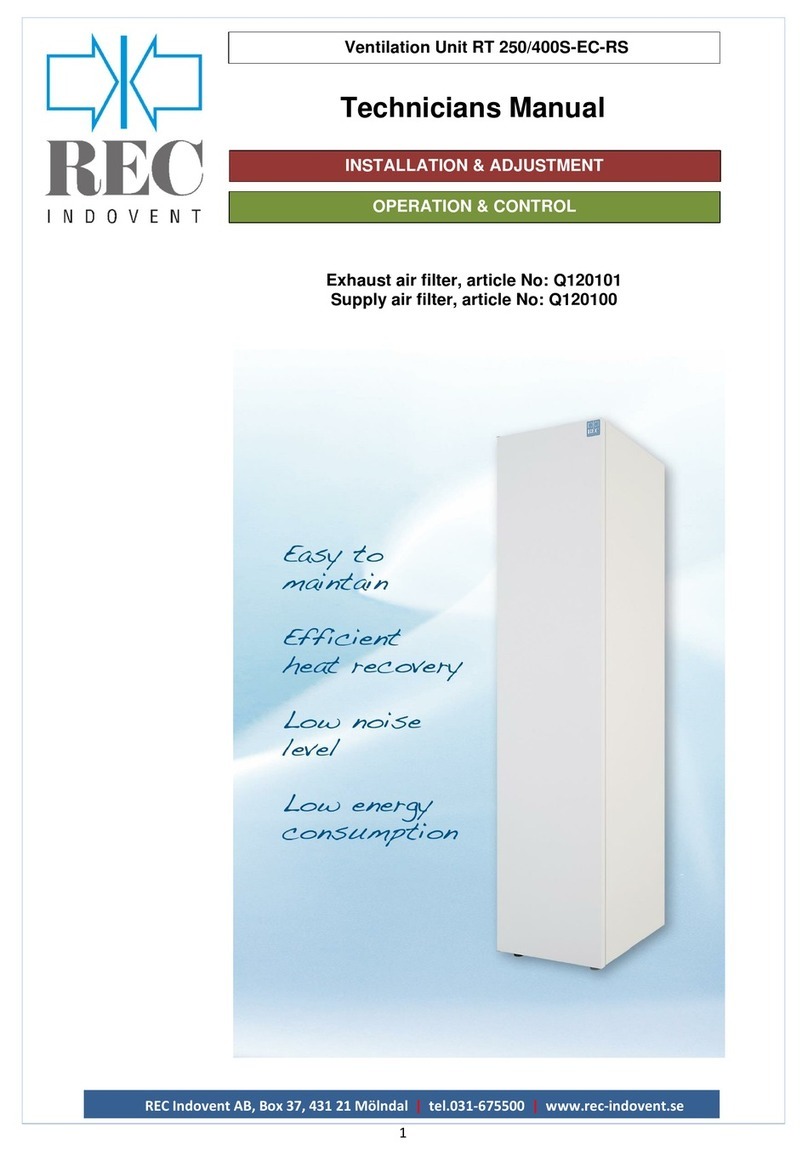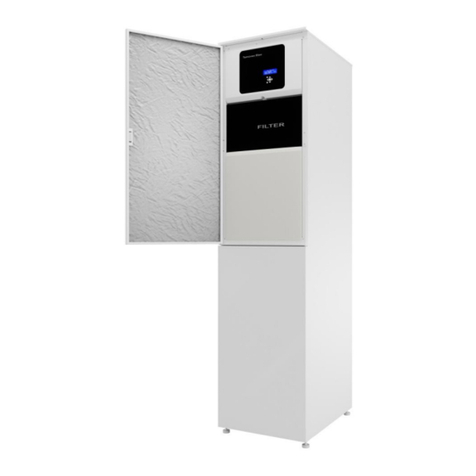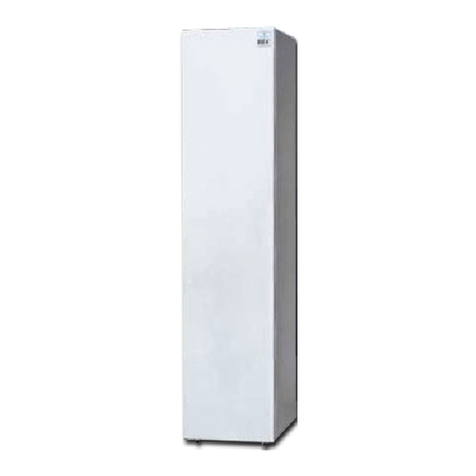
REC Indovent AB, Box 37, 431 21 Mölndal | tel.031-675500 |www.rec-indovent.se
INSTALLATION & ADJUSTMENT
Ventilation unit RT 700/1000S-EC-RS
Safety and Security
Please read this manual carefully. Pay special
attention to the safety text marked with the
exclamation mark above.
Receipt of Delivery
Check that the number of packages matches the
consignment note and that there is no transport
damage. The ventilation unit must be stored
indoors.
If possible, the unit should be kept lying down
to minimize the risk of personal injury in case of
overturning. Pay special attention to this if children
are nearby.
Installation
Work performed by the layman can impair the
performance of the ventilation unit and result in
injury to person or property. Incorrectly adjusted
units will not achieve the desired benefits such as
adequate air quality and maximized energy savings.
The unit is heavy. Edges and corners that you do
not usually come in contact with can be sharp. Use
gloves when moving the unit.
Keep an eye on children. An unassembled
unit can easily tip over under abnormal loads.
Mounting
The ventilation unit is mounted upright in the utility
room, laundry room or the like. The unit is designed
to stand in frost-free space, which is extra important
when using condensate drains.
Ensure that there is a stable and level surface on
the installation site. It is an advantage if the unit can
be placed at least 10 mm away from the wall. This is
to minimize the risk of muffler noise. We
recommend that the walls of surrounding rooms
also be soundproofed. These precautions should be
maintained despite the fact that Temovex units are
generally very quiet. The unit is equipped with
adjustable rubber feet and well balanced fans, to
avoid vibration.
The unit should be installed in such a way that it is
easy to access for maintenance and inspection.
Make sure the door at the front can be fully opened.
The unit must be placed so that it cannot be flushed
with water during operation. As an option, the unit
can be provided with protection that allows the
installation to withstand IP class X5.
Condensate Drain
The unit is equipped with a condensation drain at
the bottom of the unit. This should be connected to
a drain or routed to a floor well. Make sure that the
condensation line is placed far enough down in the
floor well, otherwise it can draw cold air from it. The
condensation line does not
need to be fitted with a
water trap. The
condensate drain has to be
connected when the unit is
installed. If the unit is
equipped with condensation boiler (KAVK) no
external connection is needed.
The Duct System
Ducts and duct details should be made of an age-
resistant material that is also easy to clean inside.
For shorter adaptations between, for example a roof
hood and the duct system, a flexible duct called
"Drasuten" can advantageously be used.
Tumble dryers and drying cabinets must not be
connected directly to the duct system. “Dragavbrott”
shall be used.
Silencing
Silencers dimensioned for the installation should be
fitted both for the supply air and exhaust air, either
directly onto the Temovex unit, or to the duct system
as close to the unit as possible. Under certain
conditions, silencers on the outdoor air duct as well
as extract air duct may be necessary.
Placing of Temperature Sensor
The four duct sensors are color-marked at both
ends as follow:
Outdoor air = blue
Supply = red
Extract = green
Exhaust = yellow
At delivery, all temperature sensors are electrically
connected to the control system. The extract and
exhaust air sensors are also pre-mounted in the
AHU's respective air ducts.
The outdoor air and supply air sensors must be
mounted during installation in respective duct.
The supply air sensor should be placed in the
supply air duct, at least 0,6 m from the heater to
avoid direct heat radiation, and after the first bend if
possible, where the temperature is more
homogeneous.
The outdoor air sensor should be placed as far from
the unit as possible (as far as the cable allow).
Remember to seal the holes carefully.
If the unit is equipped with a water battery, the anti-
freeze sensor is also pre-mounted and connected.






